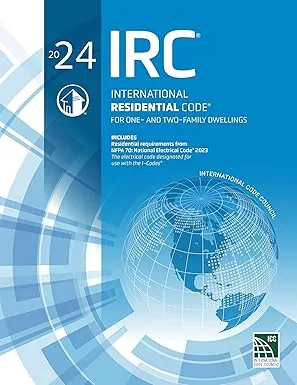Residential Sprinklers - Things To Avoid
Julius Ballanco, PE
They say that we learn from our mistakes. So I have compiled a list of mistakes I have observed on residential sprinkler installations.
For NFPA 13R systems, at least three spare sprinklers of each type are required. If you use the same sprinkler throughout the building, only three spares would then be required. If you install a variety of sprinklers, e.g., sidewall, pendent, concealed pendent, then you will have a number of spare sprinklers on the premises.
For one- and two-family dwellings (NFPA 13D), at least one spare of each type of sprinkler is recommended. While the standard merely recommends spare sprinklers, many jurisdictions add this as a mandatory requirement.
The sprinkler manufacturers have cabinets available that are designed to contain the spare sprinklers. This is an easy addition to the installation if you remember to plan for spare sprinklers.
Some of the obvious ones that are often missed include: in the dining room, where a chandelier is often installed in the middle of the room; against walls in the dining room and corners of the kitchen, hutches or furniture can be placed floor to ceiling; and kitchen cabinets stick out from the various walls in a kitchen.
That leads me to recommendations by a number of plumbing contractors who entered the residential sprinkler business. I often hear, “Forget about running 3/4-inch tubing, whether it is CPVC or copper. It is cheaper and easier to use 1-inch as the minimum pipe size.” While it doesn't make sense that a larger pipe size would be cheaper, in reality, it normally is. You eliminate the 3/4-inch fittings that need to be installed, and you can work faster by not worrying about where the size is switched from 1 inch to 3/4 inch.
I was not a believer of this recommendation when I first heard it, but I have become a convert. Although, I will admit to designing some multipurpose piping systems using 3/4-inch tubing. I have also had certain single-family dwellings where the entire system could be installed in 3/4-inch tubing.
When you are located in colder climates, you need to take measures to prevent freezing of sprinkler pipe. I know this sounds like a no-brainer, but I have seen some major mistakes by contractors thinking they were providing freeze protection.
In one installation, the contractor did his best to protect the sprinkler pipe in the furnace room, only to have to have the HVAC contractor install the combustion air opening within 6 inches of the pendent sprinkler. The first cold day of winter, water everywhere - and the owners were in Florida.
As a practice, I always attempt to avoid outside walls and ceiling installations in colder climates. Being in the Chicago area, we are definitely a colder climate. On the top floor, I like to use sidewall sprinklers whenever possible.
While it is easy to avoid outside walls, it is not always possible to avoid ceiling installations. When there is a sloped ceiling you are often forced into installing pendent sprinklers. On some of these installations I have observed that the contractor was so good that he insulated the sprinkler pipe. Of course, the pipe froze and the contractor couldn't figure out why.
When you insulate sprinkler pipe, you are insulating it from the heat of the building. Unlike a plumbing system, the liquid inside the piping is not providing a source of warmth. There is no movement of the water since it only flows when there is a fire. The warmth to prevent freezing of the sprinkler pipe comes from the dwelling unit. Therefore, you don't want any insulation between the sprinkler pipe and the dwelling unit.
I developed a detail that I use for pendent sprinkler installations in cold climates. You will notice that the sprinkler pipe must be kept tight to the ceiling. The insulation must be installed on top of the sprinkler pipe. When a pendent sprinkler is installed, the insulation must be installed completely above the pendent sprinkler. The installation of the insulation is as critical as the installation of the sprinkler piping. There can be no voids that allow cold air to impact the sprinkler pipe.
I also recommend increasing the thickness of the ceiling insulation when installing the sprinkler pipe above the ceiling. The detail shown is in an area of the country where the energy code requires an R-30 insulation in the ceiling. You will note that I specify an R-39 insulation. The additional insulation provides the added protection against freezing on extremely cold days.
These are some of the more common mistakes to avoid when installing residential sprinklers. Be sure to keep up with the latest requirements in the NFPA standards, as well as the latest information from the sprinkler manufacturers. The sprinkler manufacturers' Web sites are a good source for the latest changes regarding residential sprinkler installations.
Looking for a reprint of this article?
From high-res PDFs to custom plaques, order your copy today!







